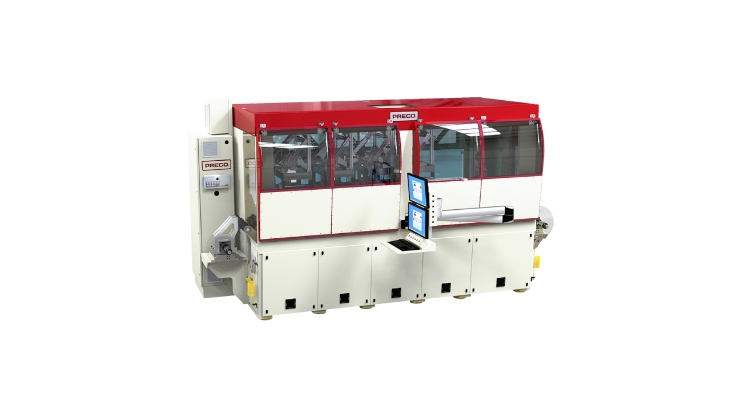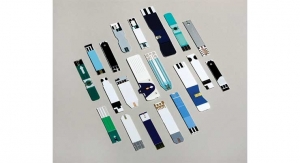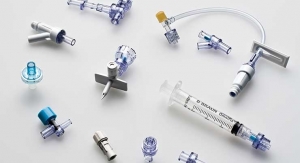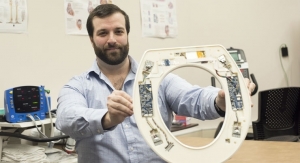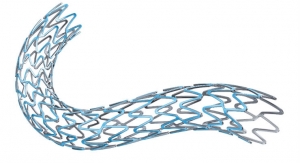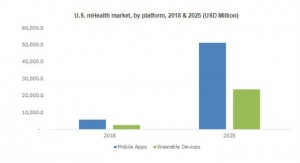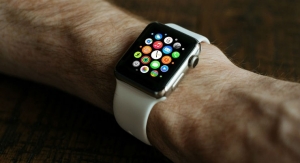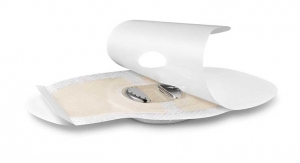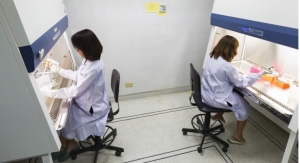Michael Barbella, Managing Editor08.05.19
It’s all about speed. And convenience.
Shrinking reimbursements and rising chronic disease rates are helping drive major changes in healthcare worldwide. Traditional fee-for-service models have long been replaced by value-based plans that aim to enhance treatments, improve patient outcomes, and lower costs. The shift to value-based care has fostered the development of innovation that allows for convenient, timely testing at the point of care; such technological advances have turned smartphones and microchips into mobile laboratories, bringing care to remote or inaccessible populations.
POC technologies can significantly improve disease management, particularly in resource-limited settings with weak healthcare infrastructures and poor access to care. POC testing delivers quick results, which in turn, allows for more rapid treatment; these solutions often produce lab-quality results that can automatically be transferred to an information system, a remote caregiver service for consultation, or an electronic medical record.
MPO’s June feature story, “Care Points,” provides an in-depth look at the factors driving the global POC market, estimated at $18.09 billion last year and forecast to grow 3.3 percent through 2025, according to industry data. Kim Hill and Terry Rusch, medical sales director and senior project engineer, respectively, for Lenexa, Kan.-based Preco Inc., were among the experts interviewed for the feature; their full input is provided in the following Q&A.
Michael Barbella: What trends/factors are currently impacting the global point of care (POC) market?
Kim Hill and Terry Rusch: Some of the biggest factors are an aging population, technological innovations, and high demand for instant results. There has also been a global shift toward taking control of personal health and well-being. Innovative technology is being realized in products like Fitbit, Apple watches, wearable sensors, etc., to support real-time feedback demands. Constant increase in new and emerging technologies and continued decrease in costs is expected.
Barbella: What factors are driving growth in this market? What segment is the growth most prolific—blood glucose testing, cardiovascular testing, blood coagulation testing, infectious disease testing, etc., or is it fairly even across the board? Why are these segments growing more quickly than others?
Hill and Rusch: The cost downs and testing time reductions seen with microfluidic devices/tests are two of the biggest driving factors of this growth. The reduced cost and lab time associated with these tests have allowed more people access to new tests or simply to more tests. It has also allowed doctors and healthcare providers unprecedented abilities to monitor a patient’s conditions. Now, instead of being able to order a test every few months or weeks, they can order the same test every day if needed for a fraction of the cost and time associated with the test previously. This allows them to react in real-time to any shifts seen in the patient’s condition, allowing for better, faster and more efficient healing.
All the segments are seeing growth, but pathogen testing seems to be the fastest growing segment that we are currently manufacturing for. From blood or food testing, to in-field infectious disease testing, pathogen detection spans more than just the medical field. These cards are highly integrated and include antibodies and reagents to complete their tests without needing to get samples to the lab, wait for lab time, and finally have somebody available to interpret the results. The card and the equipment that reads the card does all of this for you.
This section is growing so quickly due to continuous medical research and breakthroughs, and due to the fact that pathogen testing extends beyond the medical field. This helps to give it a wider support base to start with, and allows it to grow even faster as techniques are switched back and forth between medical and non-medical pathogen tests.
Barbella: What are end-users/customers requesting from their POC devices, and how has Preco Inc. met these demands?
Hill and Rusch: Ease of use, reliability and cost seem to be the biggest requests. To help combat these needs Preco has invested in antibody and reagent placement. This allows us to coat any needed chemistry onto the test cards so certain tests no longer need to be done in a lab by highly experienced techs. Having reagent capabilities allows us to produce a much larger range of test cards also. We’ve also invested in our staff, hiring well established quality engineers and managers and have our own in-house biochemist to make sure all the chemistry is designed and coated correctly to give the cards we produce a very high level of reliability out in the field.
Finally, our lasers help us to move customers from product development through market release much faster yielding speed to market benefits. Our laser systems allow us to make design changes in hours, instead of days or weeks it can take to get new hard tooling. It even allows us to make several revisions of a design at the same time to see what testing method will yield the best and most consistent results. Finally, Preco Medical has brought our all new FlexStacker online. With four stack-up stations, an inline press and three cameras per placement head, the FlexStacker was specifically designed with Microfluidics in mind. Cards can be fully assembled in an enclosed clean environment via four different robotic placement heads. If the card is larger than four layers, we simply assemble the first four layers and run it through the FlexStacker as needed until all the needed layers are assembled.
Cost efficiencies are a major factor and is equal in importance to performance requirements. Preco Medical has successfully delivered low cost consumables so our customers meet end-user expectations.
Barbella: How has wearable technology, connectivity, lab-on-a-chip technology, and smartphones impacted the development of POC solutions? How will these technologies help the market evolve in the future?
Hill and Rusch: Wearable technology, connectivity, and smartphones have had a large impact on the development of POC solutions. Smartphones trained everybody to the fact that any information you need can be accessed instantly. Wearables and connectivity made it so the same access to instant knowledge could be applied to the body and your general health. Our ever-growing connection with smartphones and instant results will continue to condition the public to needing these instant results, pushing POC solutions along with the trend. Along with this as smartphone and wearable technologies evolve and new ones are researched, this will help propel POC devices forward along with them. They will evolve and adapt as new technologies come along to keep getting us more and better information.
Data integration and accessibility are selling points to the public. People are connected 24/7 and are accustomed to instant information. This constant contact makes wearable technology appealing. Smartphones add to the constant contact aspect and allow users to provide data directly to physicians or tracking software. One big impact is most POC technologies are now either connected through the smartphone or have smartphone features built into the POC units for direct connection. The push is to continually miniaturize POC testing and lower the cost. There has been much hype in the market about microfluidics but the progress has been slow. Many applications that utilize microfluidics are coming to market with some already on the market but not noted to the public as a microfluidic application. Market research continues to show steady growth in the POC and microfluidics markets.
Barbella: What challenges face companies operating in this market? How has Preco Medical overcome these challenges?
Hill and Rusch: One of the biggest challenges companies face in the POC and medical market in general is time to market. Battling through design changes, testing and FDA approval can be a long process. FDA approval is typically the longest stage in this process and it can be made even longer by last minute design changes or a product that was not properly designed for cost effective manufacturing in the first place. Preco Medical can help expedite this situation by being agile and adaptable. Our highly integrated laser and hard tooling equipment can give a project the best of both worlds. It gives us the flexibility at design stage and the reliability of the full-scale production stage. By partnering with Preco Medical early in the design stage, we can help guide them [customers] in the areas of design for ease of manufacturability. Even the smallest change could influence processing speeds and yields. Taking advantage of our laser systems allows us to make changes in a few hours instead of days or weeks like you see with hard tooling. This means we can make several iterations at once and test different patterns to see which one delivers the performance of our customers device. Assisting customers with materials selection, number of layers, processing order, processing method (laser, die cutting etc.), we are able to reduce or eliminate expensive redesign and rework that is often seen in new product development.
Barbella: What impact, if any, is value-based healthcare having on the development of POC technologies?
Hill and Rusch: Value-based healthcare and the development of POC technologies are very intertwined. The arrival of POC devices to the market allowed for value-based healthcare to gain momentum. The reduced cost of POC testing verse traditional lab testing, has helped to save healthcare providers and patients huge amounts of money. In addition to this, the reduced time it takes to run a test helps to get results back in the healthcare providers hands faster allowing them to react faster and better. Finally, being able to coat the cards with chemistry makes it so results are no longer affect by the experience level of the lab tech preforming the test. The coatings make it so anybody can achieve the same result over and over again, reducing misdiagnoses and valuable time spent treating a person for the wrong condition.
Value-based healthcare is complimentary to people wanting to take control of health care needs. By having low cost POC testing people have more information to make decisions. Physicians also benefit from better or continuous tests or readings. As a result, healthcare professionals have more confidence to promote value-based healthcare. Better data allows better decision-making, which helps improve outcomes. If disease and outcome can be quantified then value-based healthcare become practical to all.
Barbella: Can you provide some examples of innovative solutions the company developed or helped customers develop to meet customer/market demand or requests for POC technologies?
Hill and Rusch: We receive a wide variety of requests from our microfluidic customers every year. Some of these requests include multi-layer stackups (14+ layers), multi-path/test (12+ tests per card), electrode ablation for biosensors, and chemistry integration. Customers come to us for fully assembled microfluidic tests or just a few layers that require specific equipment and experience to produce. We’ve been able to help bring all of these requests to life.
To help make the multi-layer stackups, we brought an entirely new piece of equipment online. With the help of our fantastic equipment division, the all new FlexStacker was designed, built and made ready to run. The FlexStacker is a fully enclosed clean environment, fully automated alignment and stacking device, with four robotic placement heads. Each of these placement heads have three cameras to achieve the best alignment possible between layers. Once the base card has processed through these four stations, it is pressed and rewound. If more layers are needed, it is simply fed through the FlexStacker again as needed to reach the fully built card arrangement.
To help make the multi-path/test devices feasible, we’ve worked closely with those customers on the design for manufacturability stage. We’ve worked to help them achieve tighter tolerances, allowing us to shrink the path sizes needed and nest the paths closer together.
For those seeking to put paths into an already coated surface, we are able to laser ablate the paths. With specific lasers for metals or fine features we are able to carve out very fine, consistent channels or features. For those who are not starting with a precoated film, we have screen printing capabilities ready to help print your circuit
Finally, we’ve invested in our chemistry abilities too. We currently have an entire cleanroom dedicated solely to coating microfluidic cards with four pieces of automated coating equipment and a highly trained and experienced staff for small, hand coating jobs. We also have a highly experience biochemist on staff to help with coating needs and to make sure your device is handled and coated properly.
Barbella: How do you expect the POC market to evolve over the next half decade?
Hill and Rusch: The main evolution will be in the number of POC tests and instruments available. This will be due in part to the continuous advancement and shrinking of technologies. As new technologies are developed, it will allow for improved accuracy and reliability across a whole new set of tests. More and more new tests will be developed to allow for a wider range of POC testing and monitoring. Everything you have to do now in a lab with large bulk equipment is a candidate for a developing POC test. If it’s slow, expensive or relies on human interpretation it’s also a great candidate for POC testing.
Shrinking reimbursements and rising chronic disease rates are helping drive major changes in healthcare worldwide. Traditional fee-for-service models have long been replaced by value-based plans that aim to enhance treatments, improve patient outcomes, and lower costs. The shift to value-based care has fostered the development of innovation that allows for convenient, timely testing at the point of care; such technological advances have turned smartphones and microchips into mobile laboratories, bringing care to remote or inaccessible populations.
POC technologies can significantly improve disease management, particularly in resource-limited settings with weak healthcare infrastructures and poor access to care. POC testing delivers quick results, which in turn, allows for more rapid treatment; these solutions often produce lab-quality results that can automatically be transferred to an information system, a remote caregiver service for consultation, or an electronic medical record.
MPO’s June feature story, “Care Points,” provides an in-depth look at the factors driving the global POC market, estimated at $18.09 billion last year and forecast to grow 3.3 percent through 2025, according to industry data. Kim Hill and Terry Rusch, medical sales director and senior project engineer, respectively, for Lenexa, Kan.-based Preco Inc., were among the experts interviewed for the feature; their full input is provided in the following Q&A.
Michael Barbella: What trends/factors are currently impacting the global point of care (POC) market?
Kim Hill and Terry Rusch: Some of the biggest factors are an aging population, technological innovations, and high demand for instant results. There has also been a global shift toward taking control of personal health and well-being. Innovative technology is being realized in products like Fitbit, Apple watches, wearable sensors, etc., to support real-time feedback demands. Constant increase in new and emerging technologies and continued decrease in costs is expected.
Barbella: What factors are driving growth in this market? What segment is the growth most prolific—blood glucose testing, cardiovascular testing, blood coagulation testing, infectious disease testing, etc., or is it fairly even across the board? Why are these segments growing more quickly than others?
Hill and Rusch: The cost downs and testing time reductions seen with microfluidic devices/tests are two of the biggest driving factors of this growth. The reduced cost and lab time associated with these tests have allowed more people access to new tests or simply to more tests. It has also allowed doctors and healthcare providers unprecedented abilities to monitor a patient’s conditions. Now, instead of being able to order a test every few months or weeks, they can order the same test every day if needed for a fraction of the cost and time associated with the test previously. This allows them to react in real-time to any shifts seen in the patient’s condition, allowing for better, faster and more efficient healing.
All the segments are seeing growth, but pathogen testing seems to be the fastest growing segment that we are currently manufacturing for. From blood or food testing, to in-field infectious disease testing, pathogen detection spans more than just the medical field. These cards are highly integrated and include antibodies and reagents to complete their tests without needing to get samples to the lab, wait for lab time, and finally have somebody available to interpret the results. The card and the equipment that reads the card does all of this for you.
This section is growing so quickly due to continuous medical research and breakthroughs, and due to the fact that pathogen testing extends beyond the medical field. This helps to give it a wider support base to start with, and allows it to grow even faster as techniques are switched back and forth between medical and non-medical pathogen tests.
Barbella: What are end-users/customers requesting from their POC devices, and how has Preco Inc. met these demands?
Hill and Rusch: Ease of use, reliability and cost seem to be the biggest requests. To help combat these needs Preco has invested in antibody and reagent placement. This allows us to coat any needed chemistry onto the test cards so certain tests no longer need to be done in a lab by highly experienced techs. Having reagent capabilities allows us to produce a much larger range of test cards also. We’ve also invested in our staff, hiring well established quality engineers and managers and have our own in-house biochemist to make sure all the chemistry is designed and coated correctly to give the cards we produce a very high level of reliability out in the field.
Finally, our lasers help us to move customers from product development through market release much faster yielding speed to market benefits. Our laser systems allow us to make design changes in hours, instead of days or weeks it can take to get new hard tooling. It even allows us to make several revisions of a design at the same time to see what testing method will yield the best and most consistent results. Finally, Preco Medical has brought our all new FlexStacker online. With four stack-up stations, an inline press and three cameras per placement head, the FlexStacker was specifically designed with Microfluidics in mind. Cards can be fully assembled in an enclosed clean environment via four different robotic placement heads. If the card is larger than four layers, we simply assemble the first four layers and run it through the FlexStacker as needed until all the needed layers are assembled.
Cost efficiencies are a major factor and is equal in importance to performance requirements. Preco Medical has successfully delivered low cost consumables so our customers meet end-user expectations.
Barbella: How has wearable technology, connectivity, lab-on-a-chip technology, and smartphones impacted the development of POC solutions? How will these technologies help the market evolve in the future?
Hill and Rusch: Wearable technology, connectivity, and smartphones have had a large impact on the development of POC solutions. Smartphones trained everybody to the fact that any information you need can be accessed instantly. Wearables and connectivity made it so the same access to instant knowledge could be applied to the body and your general health. Our ever-growing connection with smartphones and instant results will continue to condition the public to needing these instant results, pushing POC solutions along with the trend. Along with this as smartphone and wearable technologies evolve and new ones are researched, this will help propel POC devices forward along with them. They will evolve and adapt as new technologies come along to keep getting us more and better information.
Data integration and accessibility are selling points to the public. People are connected 24/7 and are accustomed to instant information. This constant contact makes wearable technology appealing. Smartphones add to the constant contact aspect and allow users to provide data directly to physicians or tracking software. One big impact is most POC technologies are now either connected through the smartphone or have smartphone features built into the POC units for direct connection. The push is to continually miniaturize POC testing and lower the cost. There has been much hype in the market about microfluidics but the progress has been slow. Many applications that utilize microfluidics are coming to market with some already on the market but not noted to the public as a microfluidic application. Market research continues to show steady growth in the POC and microfluidics markets.
Barbella: What challenges face companies operating in this market? How has Preco Medical overcome these challenges?
Hill and Rusch: One of the biggest challenges companies face in the POC and medical market in general is time to market. Battling through design changes, testing and FDA approval can be a long process. FDA approval is typically the longest stage in this process and it can be made even longer by last minute design changes or a product that was not properly designed for cost effective manufacturing in the first place. Preco Medical can help expedite this situation by being agile and adaptable. Our highly integrated laser and hard tooling equipment can give a project the best of both worlds. It gives us the flexibility at design stage and the reliability of the full-scale production stage. By partnering with Preco Medical early in the design stage, we can help guide them [customers] in the areas of design for ease of manufacturability. Even the smallest change could influence processing speeds and yields. Taking advantage of our laser systems allows us to make changes in a few hours instead of days or weeks like you see with hard tooling. This means we can make several iterations at once and test different patterns to see which one delivers the performance of our customers device. Assisting customers with materials selection, number of layers, processing order, processing method (laser, die cutting etc.), we are able to reduce or eliminate expensive redesign and rework that is often seen in new product development.
Barbella: What impact, if any, is value-based healthcare having on the development of POC technologies?
Hill and Rusch: Value-based healthcare and the development of POC technologies are very intertwined. The arrival of POC devices to the market allowed for value-based healthcare to gain momentum. The reduced cost of POC testing verse traditional lab testing, has helped to save healthcare providers and patients huge amounts of money. In addition to this, the reduced time it takes to run a test helps to get results back in the healthcare providers hands faster allowing them to react faster and better. Finally, being able to coat the cards with chemistry makes it so results are no longer affect by the experience level of the lab tech preforming the test. The coatings make it so anybody can achieve the same result over and over again, reducing misdiagnoses and valuable time spent treating a person for the wrong condition.
Value-based healthcare is complimentary to people wanting to take control of health care needs. By having low cost POC testing people have more information to make decisions. Physicians also benefit from better or continuous tests or readings. As a result, healthcare professionals have more confidence to promote value-based healthcare. Better data allows better decision-making, which helps improve outcomes. If disease and outcome can be quantified then value-based healthcare become practical to all.
Barbella: Can you provide some examples of innovative solutions the company developed or helped customers develop to meet customer/market demand or requests for POC technologies?
Hill and Rusch: We receive a wide variety of requests from our microfluidic customers every year. Some of these requests include multi-layer stackups (14+ layers), multi-path/test (12+ tests per card), electrode ablation for biosensors, and chemistry integration. Customers come to us for fully assembled microfluidic tests or just a few layers that require specific equipment and experience to produce. We’ve been able to help bring all of these requests to life.
To help make the multi-layer stackups, we brought an entirely new piece of equipment online. With the help of our fantastic equipment division, the all new FlexStacker was designed, built and made ready to run. The FlexStacker is a fully enclosed clean environment, fully automated alignment and stacking device, with four robotic placement heads. Each of these placement heads have three cameras to achieve the best alignment possible between layers. Once the base card has processed through these four stations, it is pressed and rewound. If more layers are needed, it is simply fed through the FlexStacker again as needed to reach the fully built card arrangement.
To help make the multi-path/test devices feasible, we’ve worked closely with those customers on the design for manufacturability stage. We’ve worked to help them achieve tighter tolerances, allowing us to shrink the path sizes needed and nest the paths closer together.
For those seeking to put paths into an already coated surface, we are able to laser ablate the paths. With specific lasers for metals or fine features we are able to carve out very fine, consistent channels or features. For those who are not starting with a precoated film, we have screen printing capabilities ready to help print your circuit
Finally, we’ve invested in our chemistry abilities too. We currently have an entire cleanroom dedicated solely to coating microfluidic cards with four pieces of automated coating equipment and a highly trained and experienced staff for small, hand coating jobs. We also have a highly experience biochemist on staff to help with coating needs and to make sure your device is handled and coated properly.
Barbella: How do you expect the POC market to evolve over the next half decade?
Hill and Rusch: The main evolution will be in the number of POC tests and instruments available. This will be due in part to the continuous advancement and shrinking of technologies. As new technologies are developed, it will allow for improved accuracy and reliability across a whole new set of tests. More and more new tests will be developed to allow for a wider range of POC testing and monitoring. Everything you have to do now in a lab with large bulk equipment is a candidate for a developing POC test. If it’s slow, expensive or relies on human interpretation it’s also a great candidate for POC testing.

